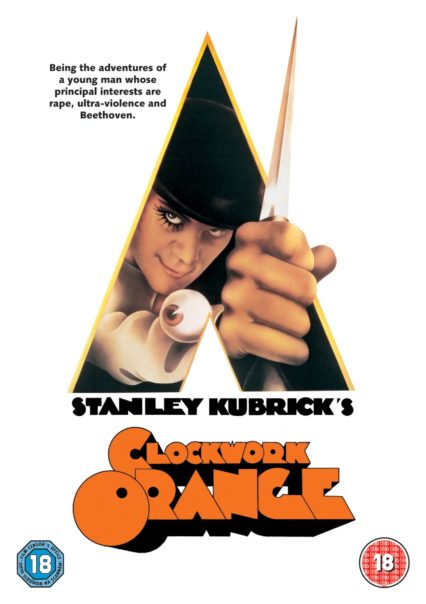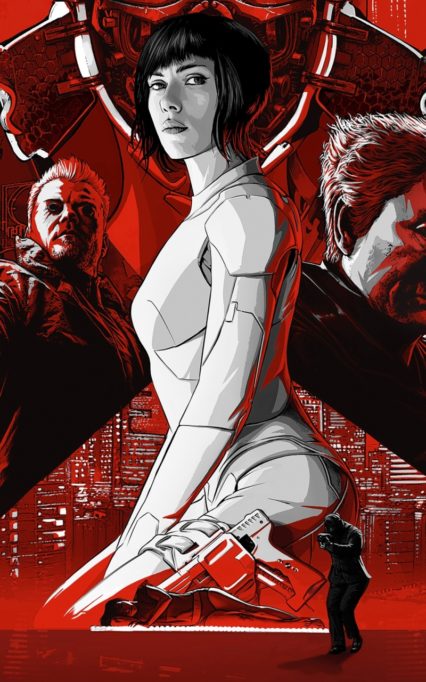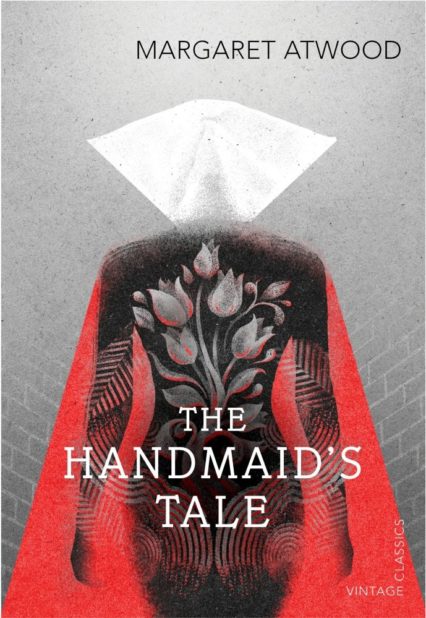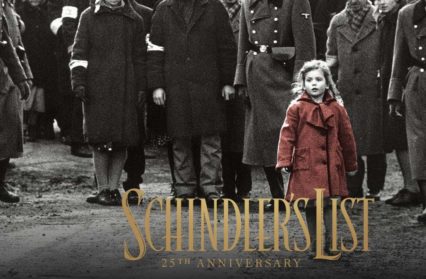How many critically successful literary screen adaptations have there been in recent years? And what about the choppy waters that lead from computer game to cinema adaptation? Carolyn Percy explores the relationship between the Hollywood blockbuster and source material.

What’s your reaction when you hear that something you love is going to be adapted for the screen? Are you cautiously excited or consumed by an anger that sends you straight to social media to vent? The sheer amount of “the book is always better than the movie” memes out there alone is a testament to the fact that adaptations have something of a troubled reputation. I’ve watched film & TV adaptations of things I love (mostly, though not exclusively, books) and have been, by turns: delighted, pleasantly surprised, underwhelmed, and bitterly disappointed. But even when I’ve been disappointed, there’s always a part of me that sympathises with the people who made them because, like translating text from one language to another, adaptation is more an art than an exact science and the balance between being faithful vs the audience expectation/ the differing needs of various mediums is a tricky one.
As they are the most common, let’s begin with book to screen adaptations.
Contrary to what you might believe, differences aren’t always due to a laissez fair attitude on the part of the people doing the adapting towards the original source material. Print and screen have different requirements and not everything always translates perfectly from one to the other. A book needs to do a lot more to help the reader ‘see’ what it’s describing because you’re deprived of everything except your imagination. Film and television are visual, so devices that are crucial in print – a narrator of some kind for example – become less important and overusing them can even end up hurting the piece. (After all, how many films have you seen where narrative voiceover has been used to convey what should be conveyed by dialogue and/or visuals?)
Then there’s the matter of compression: not everything can be included, either for the reasons I just mentioned or because of time, financial, technological or even cultural constraints. Take, for example, the two different endings of Joe Wright’s 2005 adaptation of Jane Austen’s Pride & Prejudice, one for the UK market and the other for the US. The US ending is a conversation between Elizabeth and Darcy in the torchlit grounds of Pemberley which leads into a romantic kiss. The UK version ends with the previous scene where Lizzie tells Mr Bennett that Darcy has proposed. You know what? As much as I love the original novel, here I prefer the US version. No, it’s not particularly accurate, either historically or in the context of the book, but in the context of a film – and the romance category it falls into – it’s far more narratively and visually satisfying: this is the ending we came to see and what modern audiences expect.
In contrast, the UK version – whilst perhaps more historically accurate and truer to the spirit of the book (although even Austen summarises the wedding) – just feels as if they accidentally cut the film’s last few minutes: abrupt and disappointing. Andrew Davies’s much loved and critically acclaimed 1995 adaptation for the BBC ends with the double wedding of Elizabeth, Darcy, Jane and Bingley, and its possibly most famous scene – the ‘wet shirt’ scene – is not only not in the novel but completely anachronistic, yet you can’t deny it works.
This can even come down to such trivial things as an actor’s physical appearance. For example, when Nicole Kidman was cast as Mrs Coulter in The Golden Compass, Chris Weitz’s 2007 adaptation of the first book in Phillip Pullman’s His Dark Materials Trilogy, there was discontent among some fans as she was originally described in the book as having “sleek black hair” and Kidman is blonde. The Golden Compass had problems (mainly a caginess about dealing with the story’s theme of religious fanaticism vs free thought & expression) but Kidman was not one of them. She nailed the essence of the character, her mercurial and magnetic mix of charm & cold ruthlessness, making her performance one of the film’s highlights. (Since then, in Pullman’s latest addition to the world of His Dark Materials, the first volume of The Book of Dust, Mrs Coulter is now described as having fair, tawny hair like her daughter’s).

Actors are (usually) cast based on who the filmmakers feel will deliver the best performance, if they happen to physically resemble their character as well then that’s a bonus.
Sometimes an adaptation will adhere strictly to its source material because said material is so popular that to change it would be to risk alienating the audience and therefore risking financial success. Understandable, but the other risk is that, in doing so, nothing new is added that would justify doing the adaptation in the first place.
Two recent examples of this would be 2017’s live-action adaptation of Disney’s 1991 animated classic Beauty and the Beast, directed by Bill Condon, and the 2016 animated adaptation of Alan Moore’s controversial but seminal Batman graphic novel, The Killing Joke, produced by many of the same people responsible for Batman: The Animated Series.
Beauty and the Beast was a huge success, grossing over $1 billion. But even though I and many others enjoyed it immensely many have also pointed out that, aside from a few small additions to iron out some wrinkles in the plot and a couple of new songs, it follows the original beat for beat. Bill Condon’s Beauty and the Beast is longer and made with more up to date technology but it doesn’t add much of anything new. However, I do understand why: the original Beauty and the Beast is one of Disney’s most beloved and successful titles; the only animated film to be nominated for an Academy Award for Best Picture. So, understandably, the live-action version was under a great deal of scrutiny and the safest option was to follow the original as closely as possible.
Whilst new material was added to The Killing Joke (material which has received mixed reviews) to extend the story to a film length running time and to give batgirl more screen time, the second half was a pretty faithful adaptation of the original comic. Perhaps a little too faithful. As both comics and animation are visual mediums with fewer constraints on the imagination, you might think that, in adapting one to the other, half the work is already done for you, but this isn’t necessarily the case. Some noted that in following the comic panels almost exactly, not only were opportunities to make the most of the medium missed but the art itself was consequently… not lacklustre but merely satisfactory – much more could’ve been done.
Other mediums have their own difficulties. Radio is, of course, heavily reliant on dialogue and sound, both doing the job prose narration does in print. The stage is constrained by what it’s possible to put on it (though, as was seen from the well-received stage adaptation of Susan Hill’s seminal ghost story The Woman in Black, its limitations can be used to its advantage). Video games are an interactive medium, so when adapting a film into a game these elements need to be added and removed when adapting a game into a film.
Lastly, another consideration is adapting across cultures. The film industry is a global one, and so films regularly undergo changes when being released in international markets. But then there are the phenomena of something being adapted outside the culture it was originally created in. To examine this, I’m going to, briefly, look at two recent examples – a Korean adaptation of a piece of English literature & an American adaptation of a Japanese anime franchise – one of which was well-received, the other less so.
Park Chan Wook’s 2016 film The Handmaiden is an adaptation of the 2002 novel Fingersmith by Booker & Orange Prize-nominated British writer Sarah Waters. It moves the action from Victorian England to Korea under Japanese colonial rule, and a couple of details have been changed – the uncle is a much more overtly villainous character to reflect the milieu of the time & the ‘swapped at birth’ subplot has been dropped entirely – but it has been critically and financially successful (the third indie film to make £500,000 in the UK) because, as Waters herself noted in a Guardian interview, it kept the book’s central themes intact: the love story between a Lady and her maid, female sexual repression and emancipation, and the abuse inherent in the pornography industry.
By contrast, Rupert Sanders’s Ghost in the Shell (2017) – an adaptation of the Japanese anime/manga franchise of the same name which includes Masamune Shirow’s original manga, several anime series and two animated films by seminal Japanese director Mamoru Oshii – was received much less warmly. The heavy Americanisation of early anime properties introduced to the west (including a lot of cultural censorship combined with the tendency often to aim them at an audience younger than was originally intended) has meant that English dubs are still viewed with disapproval by some fans even to this day, despite the quality increased dramatically.

Live-action anime adaptations have fared even worse, with Wachowski’s 2008 adaptation of Speed Racer receiving a fairly lukewarm response, and 2009’s Dragonball Evolution (based on the incredibly popular Dragonball franchise) faring even worse. Despite the direct transplantation of some of the 1995 film’s most iconic set pieces with visually stunning results, Ghost in Shell’s philosophical themes and ideas have been simplified, forgoing the original’s ambiguity and self-reflection in favour of more Hollywood (and therefore, mainstream audience) friendly closure. This could be, in part, due to the fact that it is not a direct adaptation of the 1995 film and instead incorporates elements from that, its sequel and the Ghost in the Shell: Stand Alone Complex anime series, with which it has most in common. But what hurt the film, even more, was the controversy surrounding the casting of Scarlett Johannsen in the lead role, which – despite the fact she was playing a cyborg, despite the fact, even Oshii himself approved the casting – drew cries of whitewashing from western fans that continued to dog the film even after it was released. (Interestingly, there was little to no negativity from the Japanese regarding the adaptation, most recognising that, while Ghost in the Shell is a Japanese property, it was an American movie, with some even commenting on how closely Johannsen resembled the main character. Ironically, the Asian market was one where the film did particularly well.)
Not all adaptations are cynical cash grabs by studios; some are made by people who see something in the source material they want to share with others. And it should be acknowledged that for everyone that has failed, adaptation has also produced some of the most beloved, and in some cases critically acclaimed, film, stage and television series ever: The Wizard of Oz, the Harry Potter franchise, IT, The Silence of the Lambs, The Godfather trilogy, Trainspotting, To Kill a Mockingbird, The Shining, Gone With the Wind, The Shawshank Redemption, The Marvel Cinematic Universe, Game of Thrones, BBC’s Miss Marple, ITV’s Poirot, Roots, Wolf Hall, Brideshead Revisited, Jeeves & Wooster, The Handmaid’s Tale, Sherlock, Poldark, Wicked, His Dark Materials, The Woman in Black and many, many more. So, the next time you hear that something you love is going to be adapted, try to keep an open mind: after all, the best adaptations keep the spirit of the original but even a bad one may introduce many to the source material. Some of them are even made with love.
For a list of the most popular literary adaptions, click here.
Carolyn Percy often contributes to Wales Arts Review.
For other articles included in this collection, go here.











